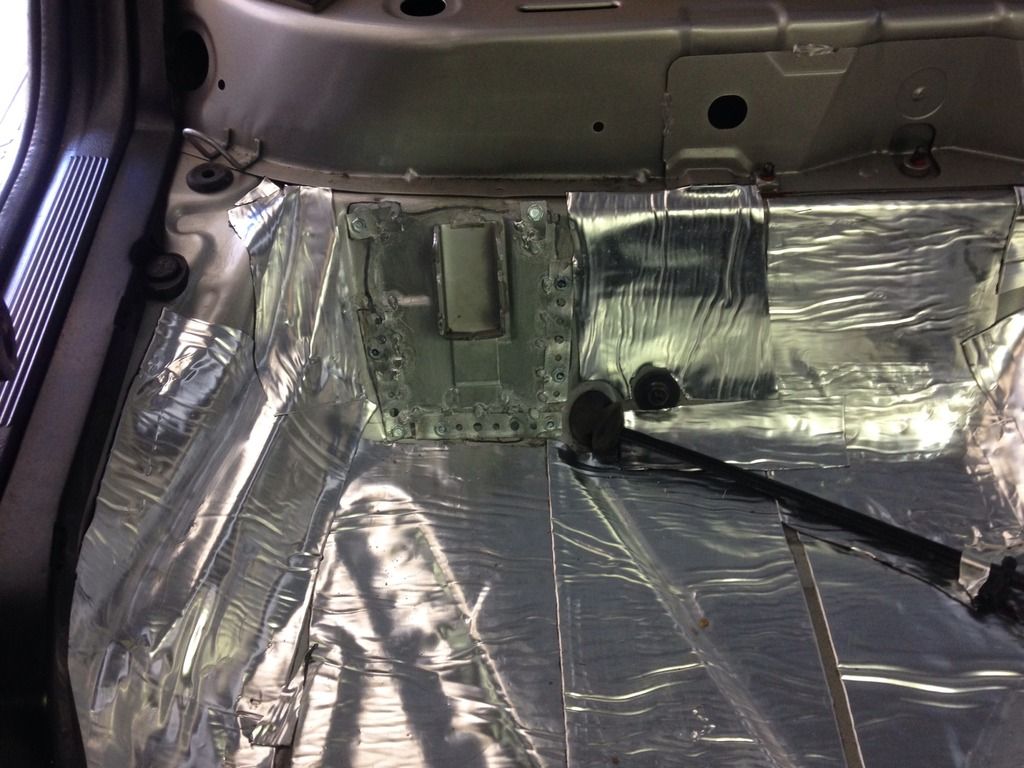-
Posts
510 -
Joined
-
Last visited
-
Days Won
10
Content Type
Profiles
Forums
Gallery
Blogs
Downloads
Events
Store
Bug Tracker
Posts posted by Boxman
-
-
-
-
You removed the water cooling from a GT3071R?
-
-
-
How much RPM was the pull?
-
1 hour ago, venderbroeck said:
That's more or less the reason. Although I didn't know about it failing emissions tests. You're the first to report that.
I think it depends on the garage and how nit-picky they are, and maybe the specific setup of mods combined. When I rev my engine while stationary, during defloating my AFR usually goes towards the lean end. This is expected and fine. During emissions they always have to test at ~3000RPM while the car is standing still, and upon throttle release the combustion momentarily goes non-stoich, throwing the CO way over the limit momentarily. I think you could argue the <0.3 CO limit is only valid at idle and higher revs and not on throttle release, but the garage saw all my mods under my car and initially pinned it on "too heavily modded exhaust".
Didn't really matter much, I went there to see how they tested it, saw what happened, disconnected the defloater and asked them to go again, and then it passed. Likewise, if they let go of the throttle slowly instead of slamming it shut, it'll pass the test fine. It just scared me a bit to get that call saying "your car failed emissions" on my first check with my new engine and custom exhaust.. :P
Oh and I went with COP too - better be prepared for the future. Disconnecting it if you really need to is literally a one minute job.
-
My guess is that with the exact same parts he can build either version (so that he can mass-produce without having to worry too much about customer-specific customizations when ordering parts and building), but at the cost of not having an on/off switch for the COP one. An on/off might still be useful, as mine initially failed emissions with the defloater attached - on fast down-rev, the combustion mixture isn't exactly 'clean' :D, which is the entire reason why Volvo designed the revs to float in our cars while shifting.
-
On 1/12/2016 at 9:46 PM, DDM said:
I had the dreaded drone from my obx exhaust so when I built the wagon I did this to it over the entire floor front to back
it helped quite a bit, particularly the spare tire area. I tried it there first and that quiets things down noticeably. Used Peal N seal from Lowes. About $75 for the entire wagon floor.
How much weight in total did this add to your car, would you estimate? I'd like a more silent car too but I also like it being as fast as possible at all times.
-
Is there a reason you calculated the forces at the middle of the stroke, where forces are minimal, and not near the top of the stroke when forces are highest?
Actually the horizontal force is minimal at the top of the stroke, as there is no horizontal component at all then (ideally). As α -> 0 at TDC, so does NR_|_
At small angles (near TDC) the relieving effect of the longer rods tops out at ~5.4%, resulting in (combined with short-skirt increased pressure) overall 21.6% increased pressure over stock. The actual maximum sideways force should be somewhere between 25%-50% of the combustion stroke, as it's a trade-off between the increasing sideways force due to increasing α, and the decreasing pressure as the stroke continues. But this would take some more time to figure out exactly - bottom line is the overall pressure increase is a pretty constant (22.0 ± 0.5)% across the entire stroke.
-
How did you calculate this?
Like this a while back.
-
Taking into account both the longer conrods (relieving pressure) and the shortskirts (increasing pressure), the net pressure increase with his setup was 22% over regular conrods + skirt length. Not orders of magnitude more, but still significant additional pressure, which may have just pushed it over the edge of what it could sustain long-term. Especially when combined with possibly increased piston rocking.
-
what's more likely to be the case
weisco design flaw OR something somewhere in his setup was causing an issue
It could well be that the shortskirt-piston/longer-conrod combination didn't agree that well with this block after all - for this type of forged pistons that is. Increased sideways pressure in combination with piston-rock due to the shortskirts may have loaded the skirts in such a way that it fatigued the alloy relatively quickly. Whether the essential flaw then lies in the piston design or the custom conrod/shortskirts design remains to be investigated.
Both the bores and skirts seem to show these vertical markings as signs of excessive sideways loading
-
 1
1
-



Simply T-5R, The Build Thread : A New Hope
in Show Room
Posted
Do you prefer the OEM rubber control arm bushings over well-lubricated poly inserts? Which one gave the better handling, in your opinion?